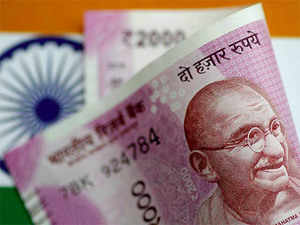
By FY18, NPAs in the Indian banking system stood at Rs 10.35 lakh crore or 9.3% of all advances and loans. 85% of these related to PSBs.

COVID-19 CASES
WorldIndiaConfirmed297,535Deaths8,498Confirmed7,514,481Deaths421,458By Hardayal Singh
The Centre’s recent stimulus package of Rs 20 lakh crore to tackle the economic disruption caused by the spread of the novel coronavirus, point out critics, hardly puts any money in the pocket of the aam admi. The budgetary impact of the recent measures announced by the FM in five press conferences is only about Rs 2 lakh crore, or about 1% of the GDP. The remaining 90% of the package is directed largely towards making it easier for industry, MSMEs and even street vendors to borrow from banks.
The government appears to have its own justification for this strategy. Even before the present crisis broke out the finances of Centre and state governments were badly stretched; the actual fiscal deficit for the Indian economy stood at about 8% of GDP. The Centre wanted to avoid a repetition of the crises of 1991 and 2013, both of which were caused in part by unacceptably high fiscal deficits and inflation. Currently, when growth has crashed and inflation is by and large benign, the government felt it had space to provide only a large monetary rather than fiscal stimulus. Besides, it wants to keep some ammunition for the rest of the year.
PSBs are expected to play a key role in the execution of this strategy. And there lies the rub. Although the banking system has been awash with liquidity for some time now, PSBs are hardly lending. Over the past 20 years, they have oscillated between reckless lending borne out of irrational exuberance, and extreme caution borne out of the fear psychosis of four Cs – courts, CVC, CAG and CBI. At the moment they are in the latter phase.
The genesis of the problem can be traced back to the 90s. CVC was then flooded with cases relating to the Harshad Mehta scam. While this saga was taking place, all banks bent backwards to finance a small coterie of brokers who carried out speculation in shares, in violation of banking norms.
I dealt with these cases after I joined CVC as its additional secretary. The difficulty at that time was that the term “vigilance angle” was defined very subjectively. We often overruled banks and inferred ulterior motives when managers had flouted banking manuals to follow market practices. As a result many bankers, with promising careers, were handed out severe punishments, creating a scenario very similar to what exists today.
Bank managers often complained to the Commission that vigilance regulations devised for government departments were ill suited for commercial organisations. In 1998, they succeeded in persuading CVC to formulate a special chapter on vigilance management in PSBs. When we wrote this chapter, we tried providing some succour to bankers. The special chapter noted that risk taking formed an integral part of banking; it would therefore be unfair to use hindsight to question purely commercial decisions from a vigilance point of view.
The Commission also decided that, as laid down by the Supreme Court, henceforth it would limit the jurisdiction of vigilance officials to only those cases where malafides could be inferred from the facts of a case; where a bank manager was involved in a misdemeanour; or where he had caused wrongful loss to his organisation; or wrongful gain to a private party. Vigilance proceedings could also be instituted where a person had acted recklessly; exceeded his powers or jurisdiction; or had shown gross or willful neglect of his official functions.
In 2004, the Commission relaxed these standards still further and left it to internal committees of banks to decide whether a vigilance case existed or not when lapses came to light.
All these steps failed to help. In 2008, after the global financial crisis broke out, the finance ministry again goaded PSBs to lend liberally. As a result, they took on huge exposures to mega projects in the power, coal and steel sectors of the economy. Both the entrepreneurs as well as PSBs failed to anticipate the environmental and other regulatory hurdles which paralysed these projects; understandably, their costs soared.
By FY18, NPAs in the Indian banking system stood at Rs 10.35 lakh crore or 9.3% of all advances and loans. 85% of these related to PSBs. While some of these loans reflected bad commercial decisions; some reflected ulterior motives – attributable to the decision makers themselves, or the persons at whose behest they acted.
Under these circumstances, to expect PSBs to lend liberally again is a tall order indeed: They have had serious leadership and HRD issues for quite some time now. Most of their managers have risen from the ranks; and they have often been subjected to all kinds of political pressures. Their boards too are packed with political favourites and hardly any possess professional expertise.
Between FYs 09 and 19 the government has infused Rs 3.15 lakh crore of taxpayer funds into these entities, but without much success. In her press briefings, the FM should have discussed how she intends to make them more effective. Mergers per se are hardly a solution.
Our 50 year experience with government ownership of banks leads us to only one conclusion: Banks cannot run on political and bureaucratic directives. As suggested by the JP Naik Committee, government must transfer ownership of PSBs to a holding company and allow them to be run by fully empowered professional boards. Alternatively, while these banks still have some market value, the government should consider reducing its fiscal deficit by privatising these banks, as soon as possible. At the end of the day, they have to sink or swim on their own!
The writer was additional secretary, Central Vigilance Commission.
Source: indiatimes.com

